5.2 Million Americans Will Be Left in The Dark by EPA's Carbon Rules on Power Plants
EPA's ineptitude in Southwest Power Pool shows the agency has no idea what it is doing
Many pixels have been published discussing how the Environmental Protection Agency (EPA)’s recently released regulations on greenhouse gas emissions from existing coal and new natural gas plants will negatively impact the reliability of America’s electric grid.
Now, the Energy Bad Boys are pleased to inform you that we have modeled the impact of these regulations on grid reliability, and it’s worse than you can possibly imagine. This is especially true in the Southwest Power Pool (SPP), where EPA regulations would leave five million people shivering in the dark.
EPA Carbon Rules Are a Disaster
Whenever EPA or other government agencies want to adopt new regulations, they are required to complete a document called a Regulatory Impact Analysis (RIA) that supposedly lays out the costs and benefits of doing so.
We were recently hired by the North Dakota Transmission Authority to model the reliability and cost impacts of EPA’s final carbon rules in the Midcontinent Independent System Operator (MISO) and Southwest Power Pool (SPP) regions. You can view the results of these studies by clicking here, but we will give you the basics on SPP, which spans from North Dakota to New Mexico, below.
The first step in this analysis is to look through spreadsheets that are produced by a company called ICF, which receives hundreds of millions of taxpayer dollars to operate EPA’s Integrated Planning Model (IPM) to find out what EPA imagines the grid of the future will look like in SPP.
Figure 1 shows that EPA’s modeled SPP grid will undergo a huge capacity expansion from 2028 through the model run ending in 2055.
The IPM, which the EPA claims is a “state-of-the-art” system that “provides forecasts of least-cost capacity expansion, electricity dispatch, and emissions control strategies while meeting energy demand and environmental, transmission, dispatch, and resource adequacy constraints,” selects an SPP grid composed mostly of wind turbines, solar panels, some new and existing natural gas capacity, and four-hour battery storage facilities.
Resource (In)Adequacy
As we explained in our piece, EPA’s Green Leap Forward, EPA does not perform reliability analyses. Instead, it performs a resource adequacy analysis of its modeled SPP grid to ensure adequate generating resources to “meet projected load and generating reserve requirements in a power region.”
In the EPA’s resource adequacy analysis, every resource is given a capacity value—which is an estimate of how productive an asset will be when the power is needed most—and these resources are “stacked” on top of each other until EPA can meet the projected peak demand in a region and its target reserve margin.
However, resource adequacy analyses are only as good as the capacity value assumptions used, and EPA’s capacity values in SPP are so shockingly unrealistic that they border on gross negligence.
Table 1 shows the capacity values given to each resource in SPP. This table is similar to the table from MISO we shared a few weeks ago, but there is one major difference: solar resources are given capacity values ranging from 82 to 100 percent, which may be the most irresponsible assumption in an energy model we have ever seen.
EPA’s ridiculous capacity values for solar make it appear as if the agency has done its due diligence and satisfied its obligation to ensure that resource adequacy on the grid is maintained (See Figure 2). But in reality, EPA’s modeled SPP grid is dangerously reliant upon solar generation working 82 to 100 percent of the time.
For context, SPP does not have nearly this level of faith in solar panels showing up to work when needed most.
A 2024 filing with the Federal Energy Regulatory Commission (FERC) includes references to an SPP study that estimated that solar should receive a 40 percent capacity value in the summer and a six percent capacity value in the winter when penetration hits 40,000 MW (See Figure 3).
When we apply SPP’s winter capacity values to EPA’s modeled SPP grid, we can clearly see that EPA’s modeled SPP grid is nowhere near meeting its projected peak demand or target reserve margins when realistic solar capacity values are used (See Figure 4). This is resource (in)adequacy 101.
This is very bad, but it gets worse.
Hourly Reliability Assessment Shows Massive Blackouts
When we conducted our hourly reliability assessment to EPA’s modeled SPP by comparing this generation portfolio to the historical hourly electricity demand and hourly capacity factors for wind and solar in 2019, 2020, 2021, 2022, and 2023 to assess whether the installed resources would be able to serve load for all hours in each Historic Comparison Year (HCY), we found blackouts everywhere.
Figure 5 shows thirteen separate capacity shortfalls that would occur from February 7, 2040, through February 19, 2040, using 2021 hourly electricity demand profiles and wind and solar hourly generation data. The longest of these capacity shortfalls lasts for 41 straight hours. During this stretch, there are more hours with blackouts than without them.
The blackouts occur because EPA’s flawed resource adequacy analysis relies heavily on solar to meet peak demand, and the sun does not shine at night. Additionally, because the EPA doesn’t conduct hourly reliability analyses, it has no idea when wind and solar resources are available on the system to serve demand. As a result, the EPA simply assumes that wind and solar generation will magically match perfectly with demand.
Figure 6 shows EPA’s modeled SPP grid experiences large capacity shortfalls when solar is underperforming the fleet-wide capacity value established by the agency. The blackouts are especially severe at night.
The worst capacity shortfall is a nearly 15,168 MW capacity shortfall that would occur in February 2040 using the 2021 HCY. This shortfall would account for 27.7 percent of the SPP-wide forecast Net Peak Demand for 2024, meaning that 5.2 million of the 19 million people who live in the region would be without power in the middle of winter. It could be Winter Storm Uri all over again.
The numbers get more disturbing. Using 2021 hourly electricity demand and wind and solar capacity factors, we determined there would be a total of 1,365 hours of capacity shortfalls in EPA’s modeled SPP grid, which is 15 percent of all the hours in a year.
Amazingly, despite EPA’s modeled SPP grid suffering a blackout 9 minutes of every hour, EPA thinks SPP will be a net exporter of energy to other regions of the country.
Table 2 shows the number of megawatt hours (MWhs) of unserved load in each of EPA’s model years in SPP for each historical comparison year. Based on 2021 demand and wind and solar production, there would be 8.3 million MWhs of unserved load across these seven model years.
These blackouts, which only account for the shortfalls observed in the seven model years, would cost the SPP region $83 billion in economic damages due to the Social Cost of Blackouts. However, EPA pretends that the compliance costs of the rules are a mere $19 billion for the entire nation through 2047, another unforgivable shortcoming of its cost-benefit analysis.
Conclusion
It is hard to describe just how irresponsible the EPA’s assumptions were for Southwest Power Pool.
Despite the agency’s claims that it has “designed these standards and emission guidelines in a way that is compatible with the nation’s overall need for a reliable supply of affordable electricity,” our modeling shows that the EPA has no idea what it is doing, and as a result, more than 5 million Americans could pay the price with winter blackouts.
It is clear the agency either has no idea what it is doing or it knows exactly what it is doing. We are not sure which is more terrifying.
We are not in good hands.
Thank you for reading Energy Bad Boys.
Like and share this post so more people can learn about the negligence at EPA.
Don’t forget to hit subscribe!
EEI joins AEP, Duke, Other Utilities in Suing EPA Over Power Plant Greenhouse Gas Rule by Utility Dive






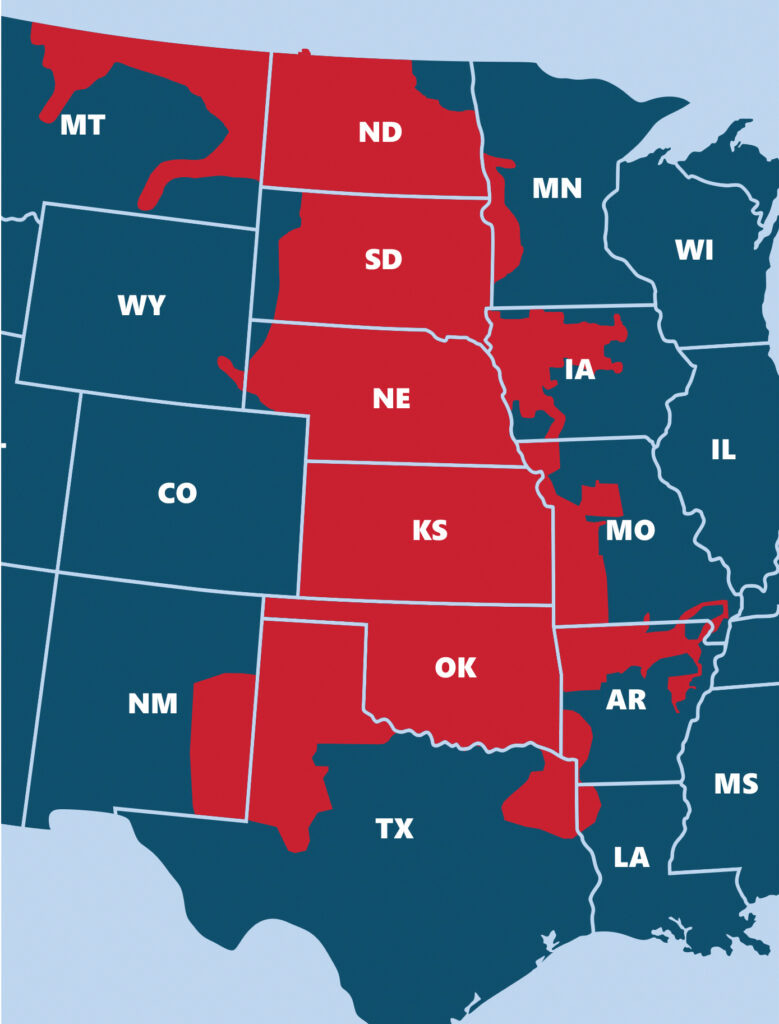
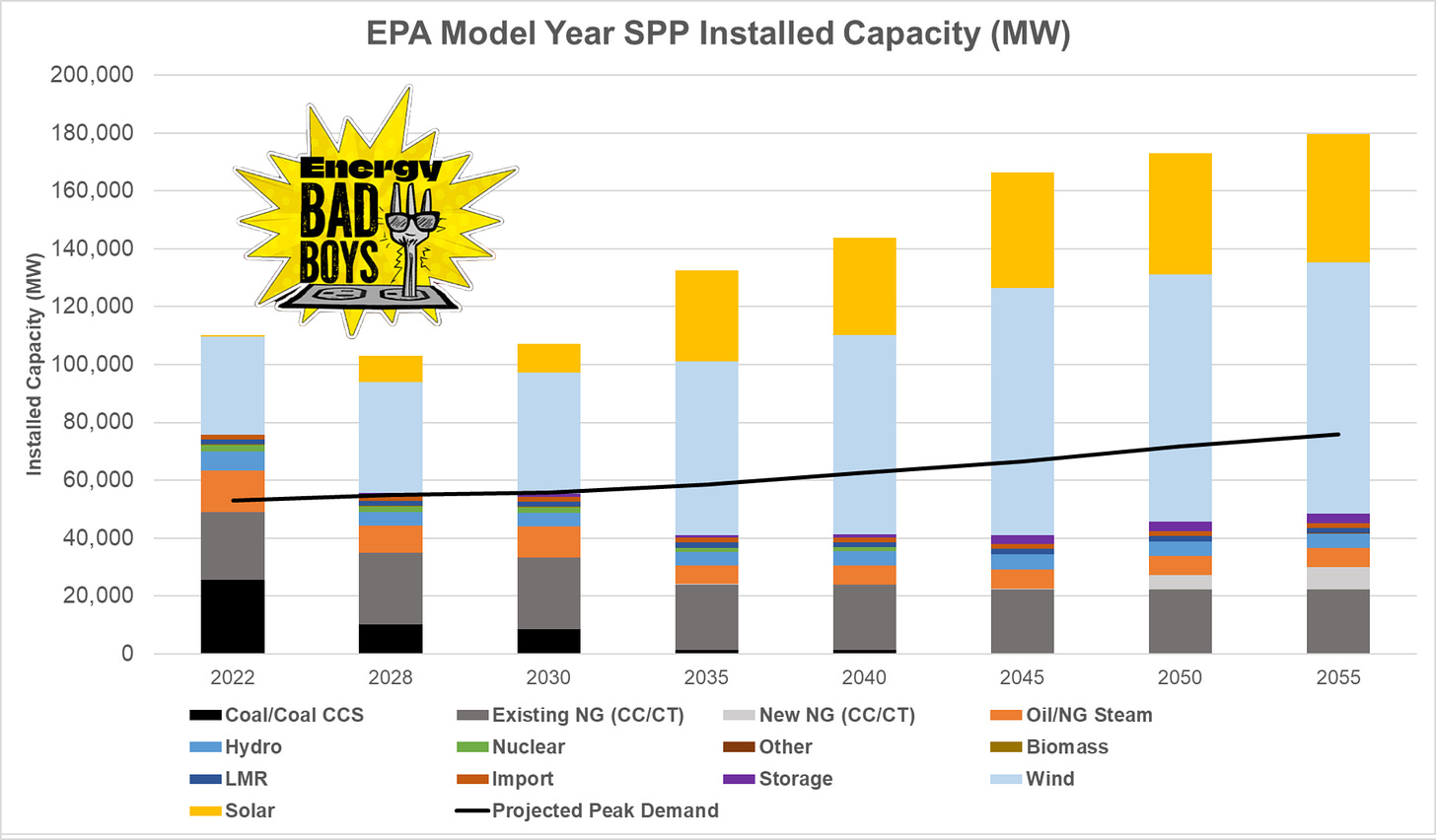

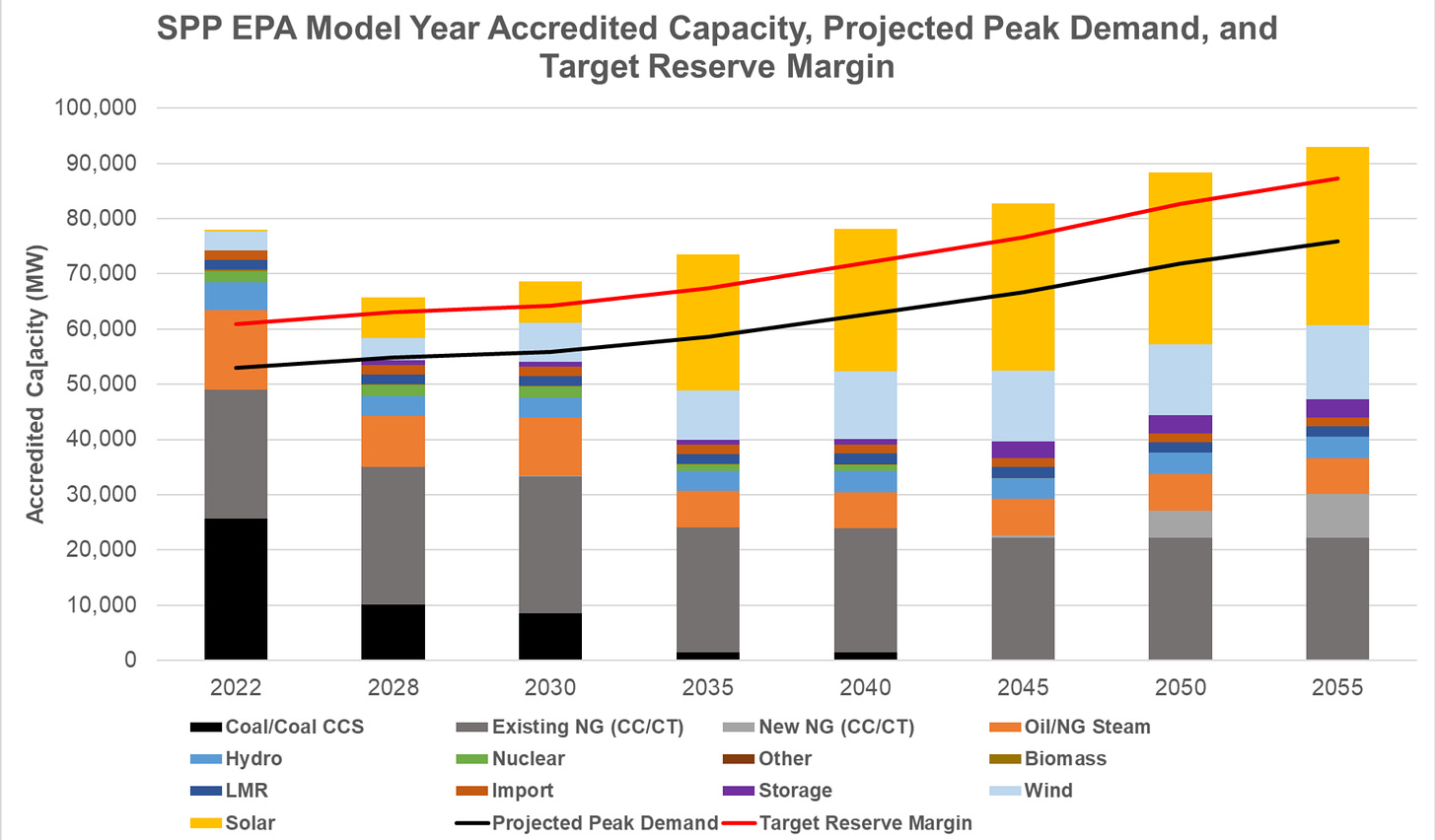
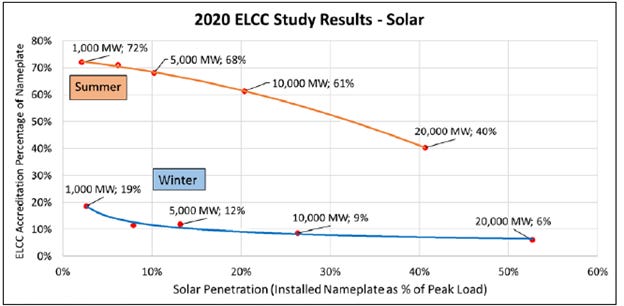
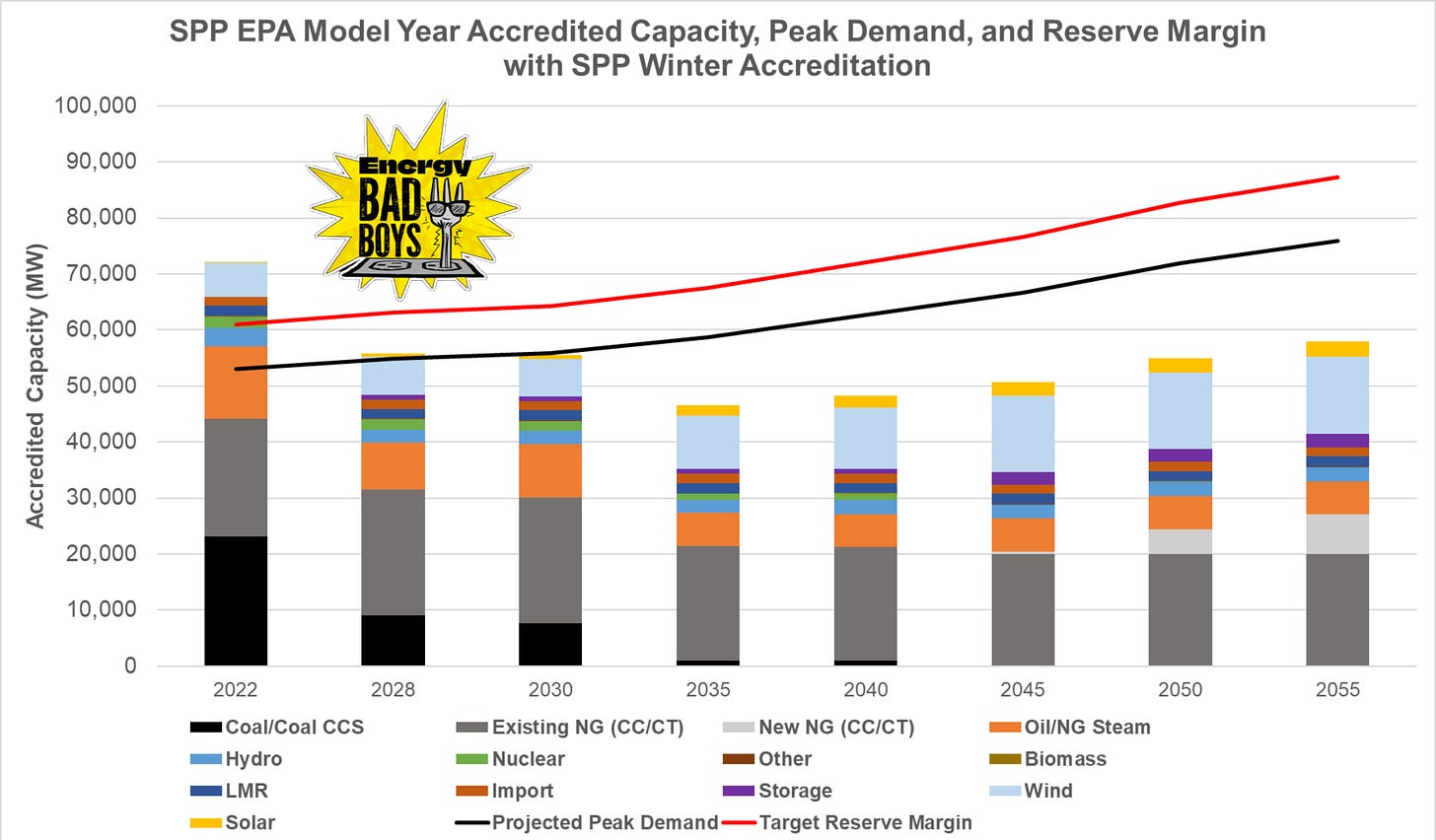
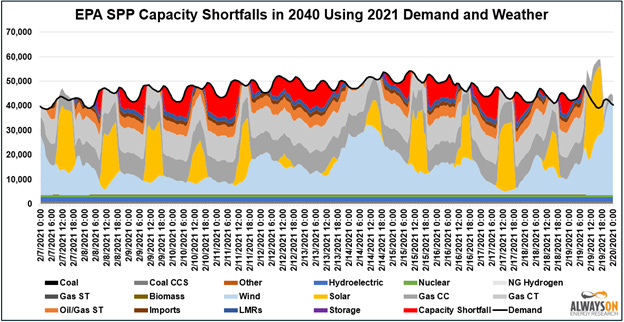
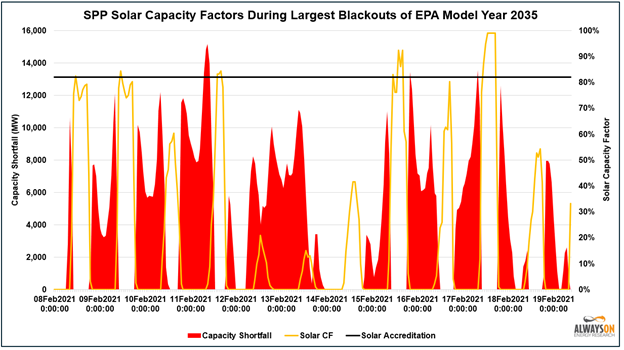


Thank you for an excellent article. Yes, absolutely, the EPA is and has been harming electricity reliability for many years but now it has gone way too far. Somehow, we need to get Congress to over ride the EPA rules. In my view, the simplest approach for Congress is to role back all EPA rules that were implemented since 2012 when Obama first Weaponized the EPA against the best interests of America.
I have come to the conclusion that blackouts are the point of all this, or at least one of the points. The pot will be brought to a boil slowly, so that by 2035 or so then-adults will have accepted as BAU showering weekly, using public transport when it runs on Tuesdays, sticking to the clean water ration, and so on.